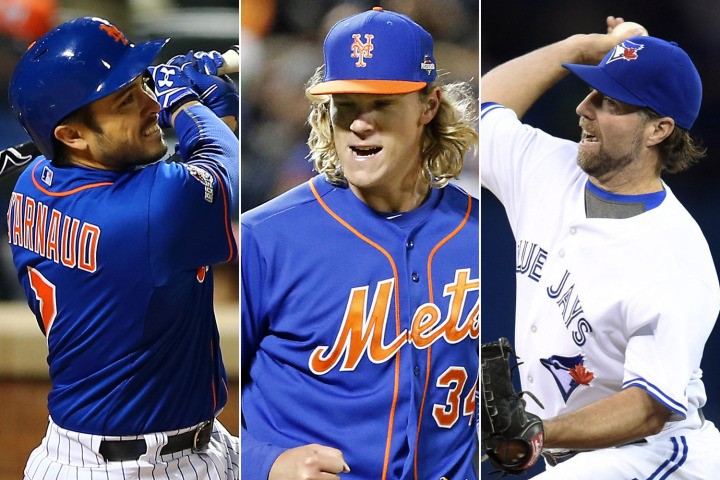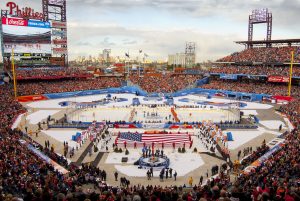If you told me after the 2013 MLB season that in two years, the ALCS would include the Kansas City Royals and Toronto Blue Jays, and the NLCS would feature the Chicago Cubs and New York Mets, I would have laughed in your face. I would have been on the ground laughing uncontrollably if you had added that the Houston Astros would be a playoff team as well.
That reaction would probably have been fair, considering the state of all five of those teams after the 2013 season. The Blue Jays, Cubs, and Astros all finished last in their respective divisions in 2013, and the Royals and Mets finished third in their divisions. Out of these teams, only the Royals posted a winning record in 2013. The Astros were by far the worst out of the group, going 51-111, a winning percentage of .315, and ended up finishing 45 games back in the American League West.
The current success of two of these teams, the Blue Jays and Mets, can be partly traced back to one single transaction. On December 17th, 2012, the Mets traded ace knuckleballer R.A. Dickey to the Blue Jays. In exchange for Dickey, catcher Josh Thole (who was included mostly due to his familiarity with catching Dickey’s unique knuckleball), and a minor leaguer, the Mets received top prospects Travis d’Arnaud and Noah Syndergaard, along with veteran catcher John Buck and a less touted minor leaguer. In essence, R.A. Dickey and his catcher were traded for d’Arnaud, a top catching prospect, and Syndergaard, a top pitching prospect.
Early reviews of the deal praised it as fair for both sides. Dickey agreed to a team-friendly contract with the Jays after the trade, signing a 2-year, $25 million extension. The Blue Jays were (and still are) in win-now mode, with stars Jose Bautista and Edwin Encarnacion reaching the end of their primes. The Blue Jays thought that exchanging their top prospects for the reigning Cy Young winner would give them a better chance at winning now, since their veteran core was only under contract through 2015 and was not getting any younger. Toronto management felt that by the time d’Arnaud and Syndergaard would be able to contribute to the major league squad, it would already be time to start a new rebuilding effort.
Conversely, the Mets were in the opposite situation. Certainly not in “win now” mode, their best days were still ahead of them after a 2012 season in which Dickey was one of the only bright spots in a fourth-place finish in the division. They were confident in the future, with stud pitching prospects Matt Harvey and Zach Wheeler just a few years away from making a notable impact at the Major League level. The Mets were in prime position to deal Dickey, a hot commodity, after his Cy Young-winning season, and wanted to add some more youth to an already bright future. Some of the Mets’ best Major League players in 2012 (Star third baseman David Wright, second baseman Daniel Murphy, and shortstop Ruben Tejada) had promising futures ahead of them, meaning that the team could wait for prospects to develop.
Today, both teams reaping the benefits of this 2012 trade in playoff success. Dickey has been very consistent for the Jays, posting a 3.91 ERA as the team’s third starter, providing depth in Toronto’s rotation at an affordable price. The Jays made more prospect-for-veteran acquisitions since the original coup of Dickey, dealing away tons of promising youngsters for All-Star third baseman Josh Donaldson, shortstop Troy Tulowitski, outfielder Ben Revere, and pitcher David Price. No team in recent memory has been so willing to deal top young prospects away for seasoned veterans who are often one-year mercenaries; Donaldson, Revere, and Price all have contracts expiring after this season. The Jays are most definitely shooting for the 2015 World Series, as they will likely lose most of their firepower after this year.
The Mets found themselves in a fairly unexpected situation where they also have the opportunity to win now. D’Arnaud hit .268 with 12 home runs in 67 games and was a welcomed addition to an offense already possessing David Wright, Lucas Duda, Daniel Murphy, and Curtis Granderson. Syndergaard contributed a 3.24 ERA and 24 starts to a pitching staff headlined by Matt Harvey, Jacob DeGrom, and Bartolo Colon (how is he still playing?!). The Mets gave up a few prospects to acquire outfielder Yoenis Cespedes and reliever Tyler Clippard near the trade deadline, further showing that they want to compete fully this season.
Both teams are enjoying their most successful season in a long time, and it all goes back to the R.A. Dickey trade three years ago. Dickey has been a consistent member of the Jays’ pitching staff throughout their run, and d’Arnaud and Syndergaard have flourished into young stars for the Mets. Both teams benefited from this deal, and that is clear through their successes this season.






The Blue Jays got absolutely fleeced on this deal by the Mets. RA is my favorite ballplayer but a 3rd/4th starter is not what you trade 2 almost MLB ready top prospects for.